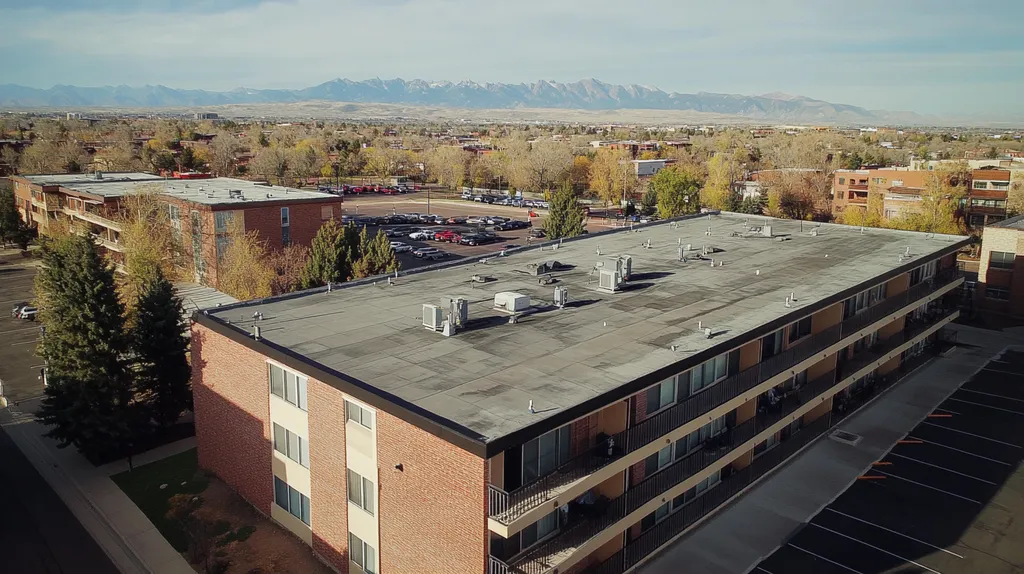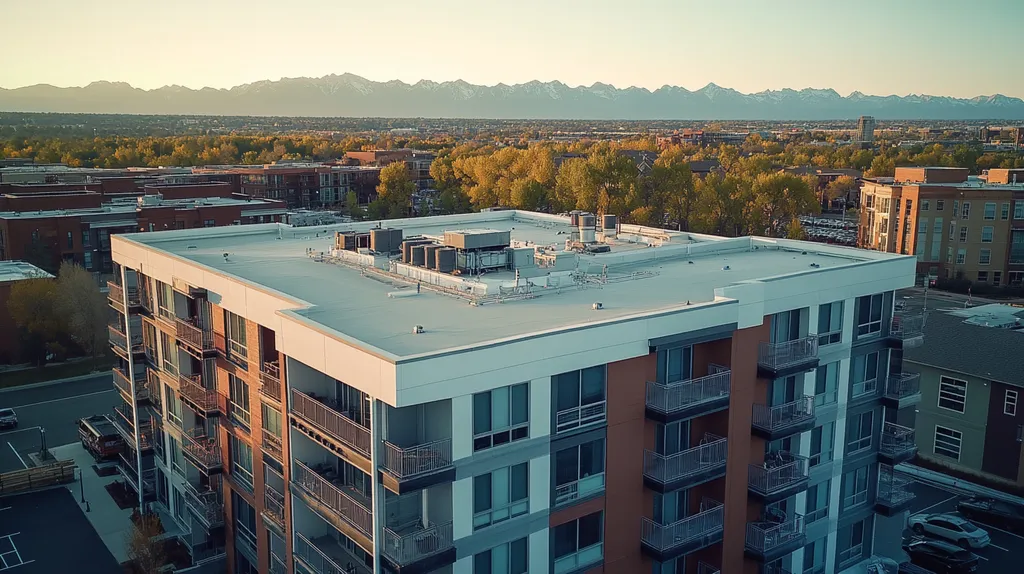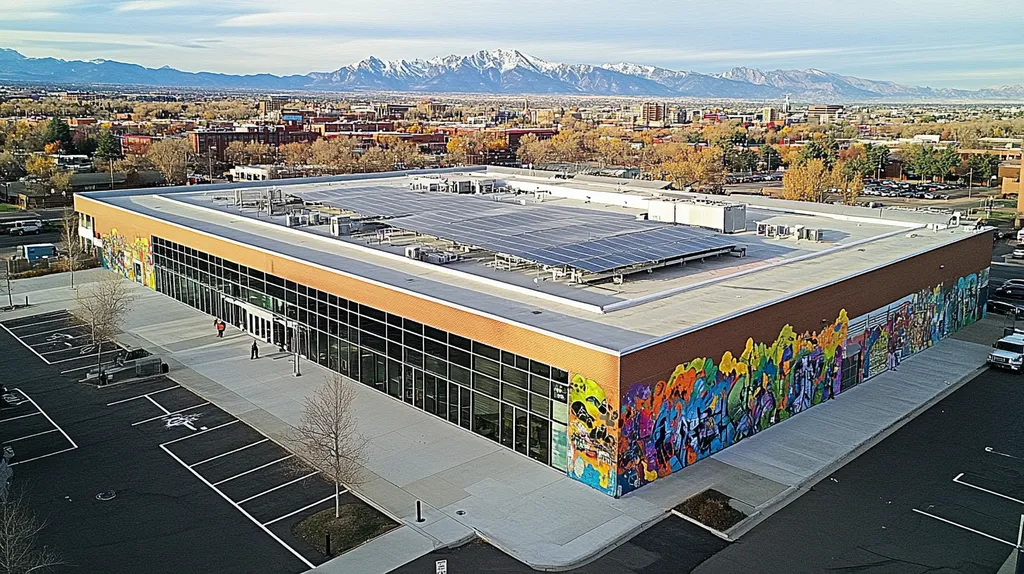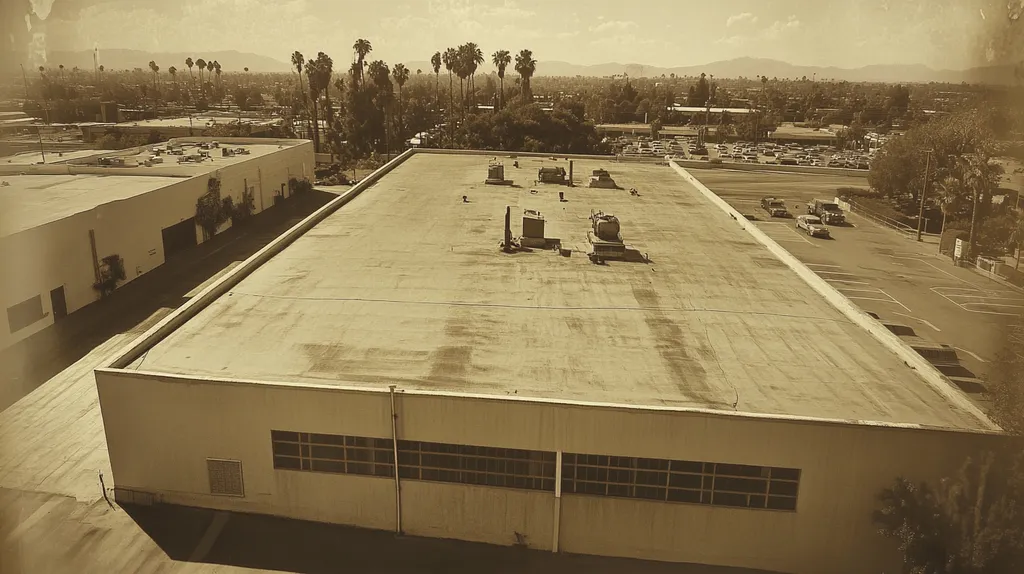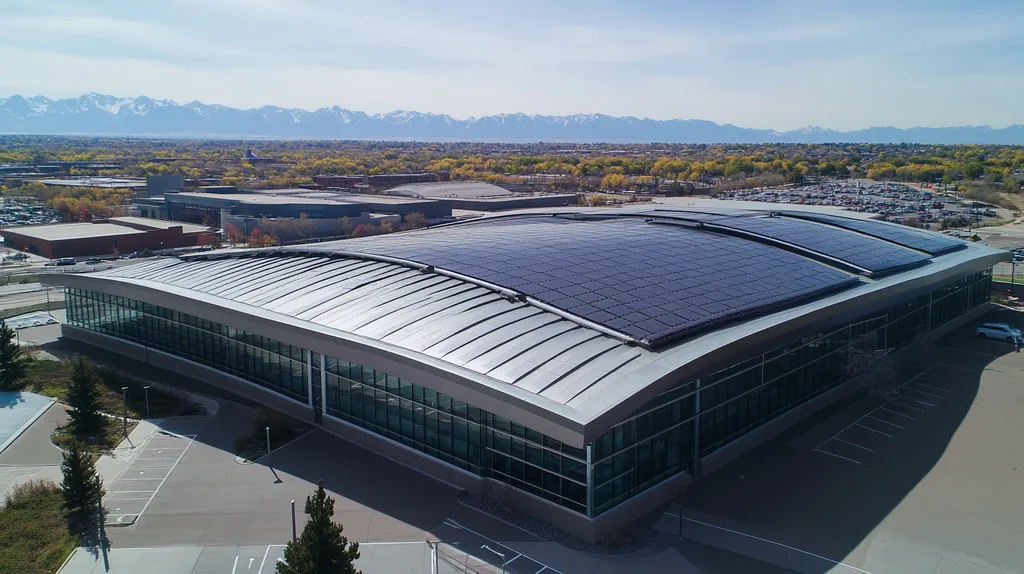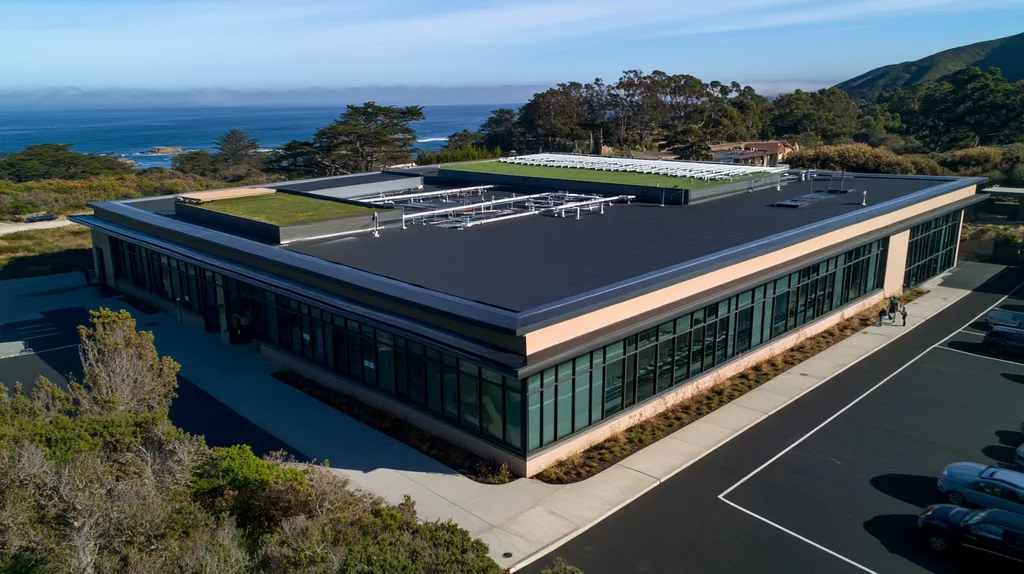Recent industry data reveals that over 40% of commercial roof coating warranties are invalidated due to improper verification procedures, resulting in millions in unexpected repair costs annually.
For property professionals, understanding and documenting warranty requirements has become increasingly critical as coating technologies advance and coverage terms grow more complex.
This comprehensive guide examines the essential components of warranty verification, from performance assessment protocols to compliance documentation requirements, providing property managers with actionable solutions to protect their roofing investments.
SECTION 1: PERFORMANCE FACTORS
The performance of a commercial roof coating is vital for safeguarding property investments and ensuring durability over time. Alarmingly, industry data shows that nearly 30% of commercial roofing systems fail prematurely, often due to insufficient maintenance or lack of thorough performance checks. Property professionals must remain proactive in evaluating essential performance factors; even minor oversights can lead to costly repercussions. This section highlights key assessment procedures critical for verifying warranty validity and maintaining the integrity of roof coatings.
Coating Integrity Assessment
Ensuring the coating’s integrity is crucial for the longevity of a commercial roof. Regular assessments should focus on the coating’s thickness, adhesion properties, and flexibility. Experts recommend measuring coating thickness with a gauge to ensure it meets manufacturer specifications, typically around 36 dry mils for a reliable system.
Additionally, conducting adhesion tests helps confirm that the coating bonds properly to the substrate. Poor adhesion can lead to peeling or bubbling, often visible as cracks or blisters on the surface.
Flexibility tests are also essential, as they determine the coating’s ability to handle temperature changes without cracking. Coatings that fail these integrity assessments may not qualify for warranty coverage, potentially leading to significant financial losses. Regular integrity assessments should be integrated into maintenance schedules to uphold warranty agreements and maximize roof performance.
Key Action Items
Leak Detection Methods
Effective leak detection is critical to maintaining the performance of commercial roof coatings. A small leak can quickly evolve into extensive structural damage, impacting both budgets and operational resources. Property managers should employ various leak detection techniques, such as infrared thermography and electronic leak detection, to identify issues early.
Infrared thermography utilizes infrared cameras to detect temperature variances in the roofing system, helping uncover potential leaks beneath the coating. This non-invasive method allows for early interventions before moisture damage spreads.
Electronic leak detection uses electrical methods to locate leaks in roofs with conductive coatings, enabling quick identification of problem areas for efficient repairs. Proactive leak detection helps preserve the roof’s integrity and maintains alignment with warranty terms; neglecting to address leaks swiftly can result in rejected warranty claims and higher repair costs.
Key Action Items
Surface Condition Evaluation
The condition of the roof surface significantly affects the coating’s performance. It’s crucial for professionals to regularly inspect surfaces for dirt accumulation, corrosion, or biological growth, each of which can undermine the coating’s effectiveness. For example, debris build-up can obstruct proper adhesion, leading to diminished durability.
Corrosion, especially prevalent on metal roofs, can compromise the coating and provide pathways for moisture infiltration. Addressing corrosion is vital before applying or maintaining any coatings to meet warranty requirements.
Additionally, biological growth, such as moss and algae, should be monitored as it can deteriorate coating materials over time and eventually lead to leaks. Implementing routine cleaning and maintenance can prevent these problems and extend the roof’s lifespan. By consistently evaluating surface conditions, property managers can ensure their roof coatings remain effective and compliant with warranty standards, ultimately protecting their investments.
Key Action Items
SECTION 2: FINANCIAL CONSIDERATIONS
Understanding the financial implications of commercial roof coating warranties is essential for property owners. Studies reveal that roughly 20% of warranty claims face denial due to misunderstandings or neglecting conditions. This highlights the critical importance of thoroughly examining warranty costs, distinguishing between material and labor expenses, and recognizing potential long-term savings. By addressing these financial elements, property professionals can make informed choices that effectively protect their investments.
Warranty Cost Analysis
Analyzing warranty costs requires a comprehensive view beyond just the initial price. Various warranty options for commercial roof coatings vary significantly in coverage and duration.
Property owners should consider warranty costs as an investment in risk management rather than a mere expense. A strong warranty can save considerable money in the long term, especially when costly repairs arise.
It’s vital to compare warranty terms from different manufacturers to understand coverage inclusions fully. While some warranties offer extensive protection, others might leave owners vulnerable to unexpected out-of-pocket costs.
Key Action Items
Material vs Labor Costs
Differentiating between material and labor costs is essential when evaluating warranties for commercial roof coatings. While materials usually represent a significant portion of overall roofing expenses, labor plays a critical role as well.
Choosing high-quality materials can often reduce labor costs over time, thanks to diminished maintenance and repair requirements. Conversely, opting for cheaper products may lead to higher labor expenses, erasing any initial savings.
Various factors, like building design and local climate, can influence both material choices and labor needs. Tailoring selections based on these unique circumstances leads to a more efficient financial plan.
Key Action Items
Long-Term Cost Savings
Evaluating warranties for commercial roof coatings requires close attention to long-term savings potential. A larger upfront investment in quality materials and comprehensive warranties often leads to substantial cost reductions throughout the roof’s lifespan.
Durable roof coatings protect the underlying system from environmental elements, potentially delaying the need for replacements by several years.
Additionally, protective coatings can enhance energy efficiency, reduce utility costs, and minimize repair frequencies, contributing to overall financial efficiency. Improved building aesthetics can also elevate property value, further justifying the initial investment.
Key Action Items
SECTION 3: COMPLIANCE REQUIREMENTS
Compliance with warranty terms is paramount for property owners overseeing commercial roof coatings. Missing specific requirements can void warranties, leading to substantial repair costs and potential service interruptions. Research indicates that around 30% of warranty claims are denied due to non-compliance. To safeguard investments and ensure roof longevity, property professionals must diligently understand and follow these critical requirements.
Warranty Terms and Conditions
Each roofing warranty comes with particular terms and conditions that must be strictly followed for claims to remain valid. These provisions may include specifications about acceptable roofing materials and the qualifications required for applicators. Property owners frequently miss significant details, such as the duration of coverage and acceptable wear levels.
Grasping these terms is vital to avoid conflicts with manufacturers and service providers. For example, if the required primer is not used when applying a roof coating, the warranty could be voided, placing financial responsibility on the owner. It’s crucial to meticulously review warranty documentation to ensure all terms are clearly understood.
Engaging with a roofing professional can help clarify these complexities and ensure that no vital information is overlooked, which could jeopardize future claims. Being well-informed about warranty conditions leads to more effective roof lifecycle management.
Key Action Items
Maintenance Scheduling Mandates
Regular maintenance is frequently a mandatory aspect of commercial roofing warranties. Most manufacturers dictate that documented inspections occur at set intervals to keep coverage active. These schedules are essential for identifying developing issues before they escalate into serious problems, thereby lengthening the lifespan of the roof.
Neglecting maintenance guidelines may not just void the warranty but also lead to unexpected repair costs. For example, missed inspections can allow minor leaks to grow into significant water damage issues. Sticking to a maintenance schedule is crucial to protect investments effectively.
Building relationships with reputable roofing professionals helps facilitate ongoing maintenance. Moreover, establishing a schedule to track inspections prevents oversight. By prioritizing regular maintenance, property managers can significantly mitigate risks and promote longevity.
Key Action Items
Documenting Compliance Records
Accurately documenting all maintenance actions is crucial for validating warranty compliance. This documentation serves as evidence that necessary evaluations took place according to the warranty specifications. If issues arise, these records can help substantiate claims and demonstrate adherence to planned maintenance.
Failure to maintain sufficient documentation may complicate proving warranty coverage, particularly in the case of disputes. For example, if a leak occurs, insufficient records might hinder the ability to secure a claim. Thus, an organized documentation strategy is vital for any property management team.
Utilizing a digital tracking system can facilitate streamlined documentation efforts, making it easier to uphold comprehensive records. Regular audits of compliance documentation can further reinforce the property’s standing with warranty providers. Well-maintained records are a property owner’s best defense against potential warranty issues.
Key Action Items
SECTION 4: RISK MANAGEMENT
Managing commercial roof coating warranties requires an acute awareness of potential risks. Property owners risk significant financial losses from warranty voids caused by inadequate maintenance or improper installations. Alarmingly, over 70% of commercial roof claims face denial due to warranty violations. Understanding how to identify these risks and implement effective strategies is essential to maintain valuable warranties and safeguard investments.
Identifying Potential Risks
Effective risk evaluation begins with recognizing factors that could jeopardize roof coating warranties. Common risks include improper installation, lapses in regular maintenance, and the use of incompatible materials. For instance, using a non-compatible sealant might void the warranty.
Environmental conditions are also pivotal; regions with severe winds, extreme temperatures, or heavy rain require careful attention to mitigate risks. Regular assessments of these environmental factors help property managers anticipate potential issues before they escalate.
Moreover, partnering with contractors who lack a solid reputation can lead to subpar workmanship. It is essential to ensure that contractors are certified and experienced in commercial roofing coatings to minimize these risks effectively.
Key Action Items
Mitigating Warranty Voidance
Implementing effective mitigation strategies is crucial for maintaining roofing warranties. Property managers should ensure that all work is performed according to manufacturer specifications. This includes adhering to approved installation techniques and materials.
Regular inspections and scheduled maintenance significantly help in spotting potential problems early. For instance, simple bi-annual inspections can uncover issues like pooling water or visible wear, ensuring that documented maintenance history is available for future warranty claims.
Moreover, establishing written agreements with contractors that emphasize warranty compliance can prevent misunderstandings. Ongoing education for facility management staff about warranty terms also plays a vital role in ensuring compliance.
Key Action Items
Crisis Management Strategies
Even with strong risk management strategies, crises can still arise. Having a crisis management plan is essential for effectively addressing issues as they occur. This plan should detail contacts, roles, and procedures for warranty disputes.
Developing clear communication channels with contractors and manufacturers will expedite issue resolutions. Keeping comprehensive records of inspections, communications, and maintenance efforts serves as crucial evidence in potential disputes.
Additionally, training employees to differentiate between warranty coverage and exclusions can reduce misinformation regarding claims. Awareness empowers property managers to act promptly when challenges arise.
Key Action Items
SECTION 5: OPERATIONAL PROCEDURES
Ensuring the integrity of a commercial roof coating is essential for safeguarding property investments. Failure to adhere to proper operational procedures can result in costly repairs and a reduced lifespan of the roofing system. Research indicates that conducting regular inspections can extend roof coating life by as much as 15 years. This section details essential inspection frequencies, maintenance protocols, and effective approaches to repairs and replacements to uphold warranty validity.
Inspection Frequency Guidelines
To protect warranty coverage, property managers should perform inspections at least twice a year. Seasonal changes often reveal hidden issues, so timely evaluations are paramount. Every inspection must include checks for signs of wear, such as cracks and blisters, that could compromise the coating’s integrity.
In addition to bi-annual inspections, it is crucial to conduct assessments after extreme weather events. Incidents like hail, high winds, or heavy rainfall can inflict unexpected damage. By promptly addressing these concerns, property managers can prevent small issues from evolving into major repairs, thus safeguarding their investment.
It is equally important to document all inspections and findings. Keeping a detailed record not only facilitates warranty claims but also serves as a valuable reference for future roofing contractors. Maintaining a consistent inspection schedule demonstrates a commitment to roof maintenance and warranty compliance.
Key Action Items
Maintenance Protocol Implementation
Developing a comprehensive maintenance protocol is vital for maximizing the lifespan of roof coatings. Routine maintenance tasks must involve cleaning and clearing debris from the roof surface and drainage systems. Clogged drains can cause standing water, which drastically shortens a coating’s life.
Regular maintenance can yield significant cost savings. For instance, proactive upkeep helps minimize the risk of leaks that lead to structural damage and expensive repairs. Investing in scheduled maintenance reduces risks associated with moisture accumulation in hard-to-reach areas.
Additionally, property managers should plan for periodic re-coatings as recommended by manufacturers to restore the roof’s protective barrier. These applications ensure that warranties remain intact while improving reflective properties that help lower energy costs.
Key Action Items
Repair and Replacement Processes
Establishing clear procedures for repair and replacement is pivotal to prevent warranty issues. Minor repairs like sealing small cracks and addressing blisters should be completed swiftly to avert larger failures. Adhering to manufacturer guidelines during repairs ensures compliance and protects warranty status.
When significant repairs or replacements are necessary, obtaining approvals from the roof coating manufacturer is critical. Documenting these communications guarantees that future work aligns with warranty requirements. Failing to consult with the manufacturer can inadvertently void the warranty.
Using approved materials and contractors for repairs is equally essential. Many warranties require specific products, and using unapproved options can have serious repercussions. Compliance with these guidelines ensures the sustainability of the investment in roof coating and ongoing coverage.
Key Action Items
SECTION 5: OPERATIONAL PROCEDURES
Maintaining the integrity of a commercial roof coating is essential for preserving property investments. Failing to follow proper operational procedures can result in costly repairs and shorten the roof’s lifespan. Research suggests that consistent inspections can extend roof coating endurance by up to 15 years, showcasing the importance of regular upkeep. This section outlines inspection frequency, maintenance protocols, and essential procedures for repairs and replacements to ensure warranty compliance.
Inspection Frequency Guidelines
To protect warranty coverage, property professionals should conduct inspections at least twice a year. Seasonal changes can reveal hidden problems, so timely evaluations are crucial. Each inspection should include checks for signs of wear, such as cracks or blisters, that threaten the coating’s integrity.
Additionally, it is prudent to perform assessments after severe weather events. Hail, strong winds, or heavy rain can cause unforeseen damage. By addressing issues immediately, property managers can prevent minor problems from escalating into significant repairs, thus safeguarding their investment.
Documenting all inspections and findings is vital. Maintaining detailed records not only facilitates warranty claims but also serves as a valuable reference for future roofing contractors. A consistent inspection schedule emphasizes the commitment to roof maintenance and compliance with warranties.
Employing a third-party roofing consultant can enhance inspection procedures. These professionals provide additional expertise and help identify potential issues early, ensuring that property owners are compliant and proactive with their assets.
Key Action Items
Maintenance Protocol Implementation
Establishing a comprehensive maintenance protocol is key to maximizing the lifespan of roof coatings. Routine tasks should include cleaning and clearing debris from the roof surface and drainage systems, as clogged drains can lead to standing water, significantly diminishing a coating’s life.
Regular maintenance can yield substantial cost savings. Proactive upkeep helps reduce the risk of leaks, which can cause structural damage and lead to expensive repairs. Investing in regular maintenance mitigates risks associated with moisture accumulation in less visible areas.
Additionally, property managers should plan for periodic re-coatings per manufacturer recommendations. These applications restore the roof’s protective barrier and keep the warranty intact while enhancing energy efficiency.
Training facility staff on effective maintenance techniques is also vital. Understanding necessary upkeep ensures immediate attention to small issues before they escalate into warranty-voiding problems.
Key Action Items
Repair and Replacement Processes
Establishing clear procedures for roof repair and replacement is essential to avoid warranty pitfalls. Minor repairs, such as sealing small cracks or addressing blistering spots, should be executed promptly to prevent larger failures. Adhering to manufacturer guidelines during repairs ensures compliance with warranty requirements.
When significant repairs or replacements are necessary, obtaining approvals from the roof coating manufacturer is critical. Documenting these communications guarantees that future work aligns with warranty requirements. Failing to consult with the manufacturer can inadvertently void the warranty.
Using approved materials and contractors for repairs is equally essential. Many warranties specify that only certain products can be used, and deviating from these recommendations can lead to serious consequences. Adhering to these requirements protects the investment in coating and ensures continued coverage.
Establishing a contingency budget for urgent repairs can streamline the process. Having funds readily available allows for quick action, which is vital to preventing further damage and maintaining warranty compliance.
Key Action Items
The Bottom Line
Recent industry analysis reveals that proper warranty verification can prevent up to 85% of commercial roof coating failures, potentially saving property owners millions in unexpected repairs and replacements.
The stakes are particularly high as evolving coating technologies and increasingly complex warranty terms create new compliance challenges for property professionals.
Success hinges on implementing comprehensive verification protocols that address performance monitoring, financial planning, compliance documentation, and risk management strategies.
Property managers who establish clear operational procedures and maintain detailed records position themselves to maximize warranty protection and extend roof coating lifespans by 10-15 years on average.
Moving forward, the industry trend toward digital documentation and automated inspection scheduling will further streamline warranty verification processes while reducing compliance risks.
FREQUENTLY ASKED QUESTIONS
Q. How can I assess the integrity of my commercial roof coating?
A. Assessing the integrity involves measuring coating thickness, performing adhesion tests, and checking for cracks or blisters. Regularly conducting these checks ensures compliance and enhances durability, helping you to maintain your investment.
Q. What financial considerations should I have for my commercial roof warranty?
A. It’s crucial to analyze warranty costs, including material versus labor expenses. Understanding these financial elements helps you make informed decisions and could protect you from unexpected costs down the line.
Q. What warranty terms should I understand for my industrial roof?
A. Each warranty includes specific terms regarding acceptable materials, applicator qualifications, and coverage duration. Understanding these details is essential to prevent conflicts and ensure compliance for warranty claims.
Q. How can I identify risks that might void my commercial roof warranty?
A. Identify risks by evaluating factors such as improper installation, neglecting maintenance, and using incompatible materials. Regularly assess environmental conditions and ensure contractors are reliable to minimize risks effectively.
Q. What is the recommended inspection frequency for my commercial roof?
A. Conduct inspections at least twice a year, and after severe weather events. Regular assessments identify hidden issues early, helping to prevent bigger repairs and ensuring you stay compliant with warranty terms.
Q. How do I implement a maintenance protocol for my industrial roof?
A. Implement a protocol that includes routine cleaning, clearing of debris, and scheduled re-coatings. Keeping detailed documentation of maintenance activities is essential for compliance with warranty conditions and maintaining roof longevity.
Q. What steps should I take for effective crisis management concerning my commercial roof?
A. Develop a crisis management plan detailing procedures for warranty disputes and key contacts. Keeping organized records and training staff on warranty coverage can substantially improve response times and outcomes in crises.

